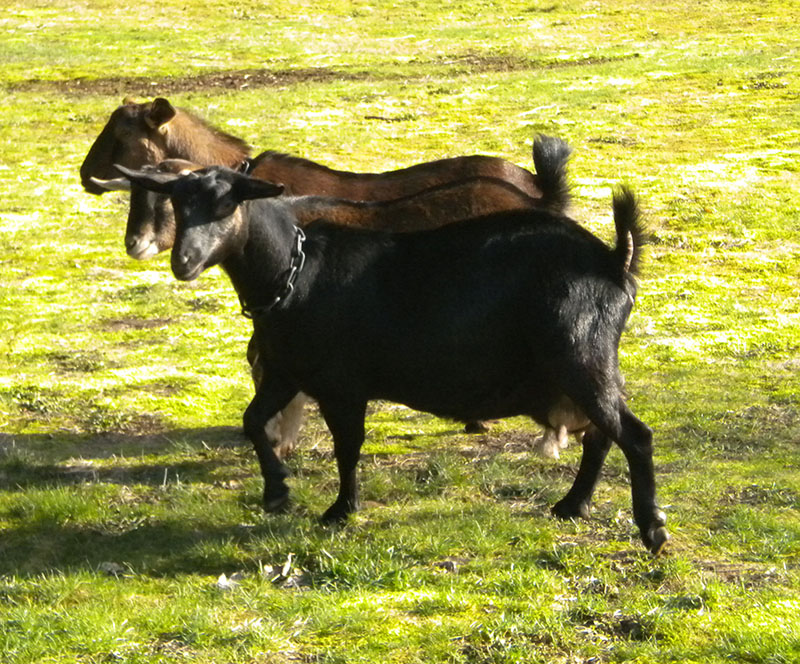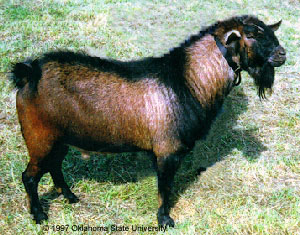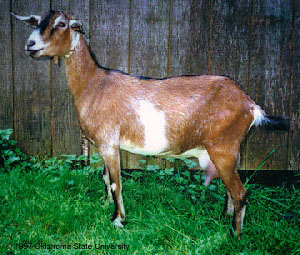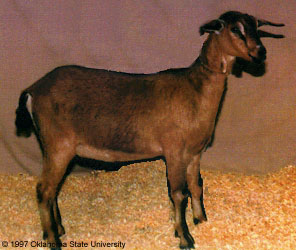Kinder Goats
The fall of 1985 found the Showalters of Zederkamm Farm, Snohomish, Washington in a bind. Their old Nubian buck had died and left their two Nubian does without a mate. True, they had other goats including several Pygmies and the Pygmy buck was eager to be of help. So they bred the Nubians to the little fellow and in the spring of 1986 three little doe kids were born, the first Kinders. One, called Liberty, stayed at Zederkamm Farm, one was placed with a 4-H girl and the other went to live with Teresa Hill, a nearby goat enthusiast.
Liberty turned into a delightful goat with a charming personality, delightfully rich, sweet milk and the ability to produce three to six kids every year. More crosses were made, this time in a deliberate attempt to produce more of these moderate sized, highly efficient diary goats. Teresa Hill saw the potential of these goats with their smaller size, high feed conversion efficiency, rich milk and easy fleshing. Along with two other local Snohomish ladies, Daralyn Hollenbeck and Kathy Gilmore, Teresa launched an organization to register and promote this new, dual-purpose breed of goats. Initial publicity found a ready interest among goat fanciers around the country and now over 50 herd names and many hundreds of goats are registered with the Kinder Goat Breeders Association.
The Kinder goat, as it has evolved, is a joy to milk and an ideal small homestead milk producer. Though smaller, Kinder goats are required to meet the same standards of production to be eligible for star milker awards as their larger counterparts registered by the American Dairy Goat Association. With a base production of 1,500 pounds of milk and/or 52.5 pounds of butterfat in 305 days or less, freshening at 2 years or less in age, these hard working little animals stand up well in comparison. The original, Zederkamm Liberty, has a 305-day record starting at 3 years and 6 months of age of 1,730 pounds of milk and 115 pounds of butterfat.
Since the breed is being developed as a dual purpose breed, it is also important to note that the wethers (does as well) make extremely desirable meat animals. Usually born weighing 4 or 5 pounds, they grow rapidly at a rate of about 7 pounds per month. Recently some 6-month-old wethers were slaughtered weighing about 50 pounds and dressing out at 30 pounds. This makes the dressing percentage a very favorable 60 percent. Older wethers have an even higher dressing percentage with some 14-month-old wethers having a live weight of 80 pounds and a carcass weight of 50 pounds - a dressing percentage of nearly 63 percent.
It is easily possible for a Kinder doe weighing about 115 pounds to produce five kids who in 14 months can weigh 80 pounds each and dress out at 50 pounds thereby producing 250 pounds of meat each year.
References
Information on this page is provided courtesy of the Kinder Goat Breeders Association, P.O. Box 1575, Snohomish, WA 98291-1575




